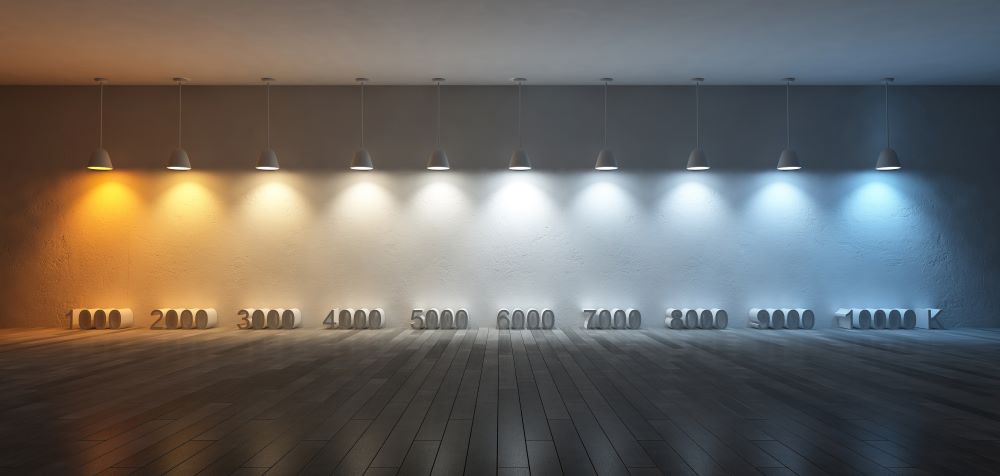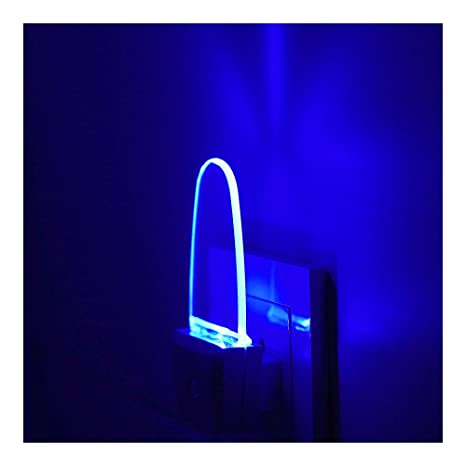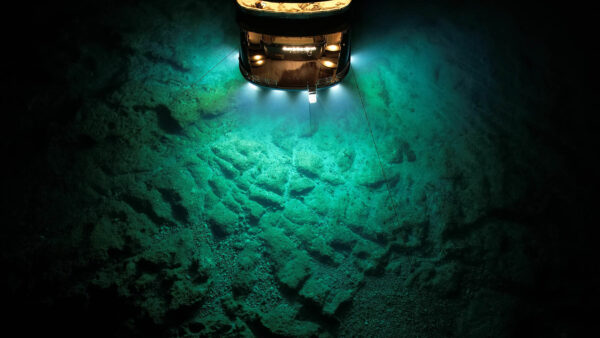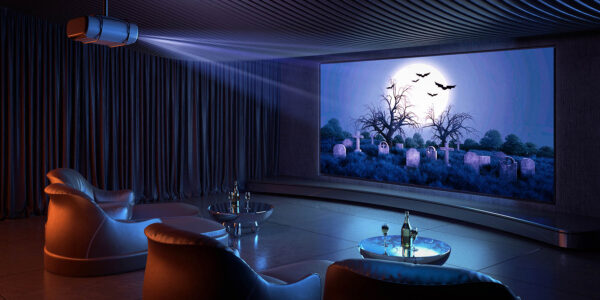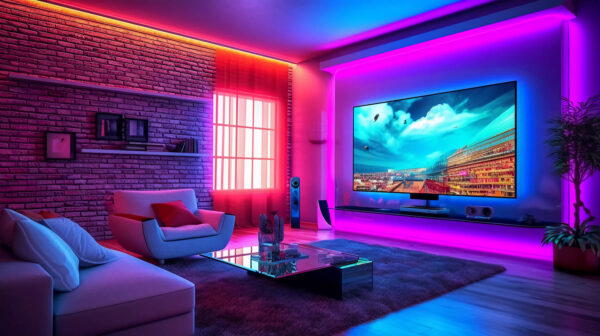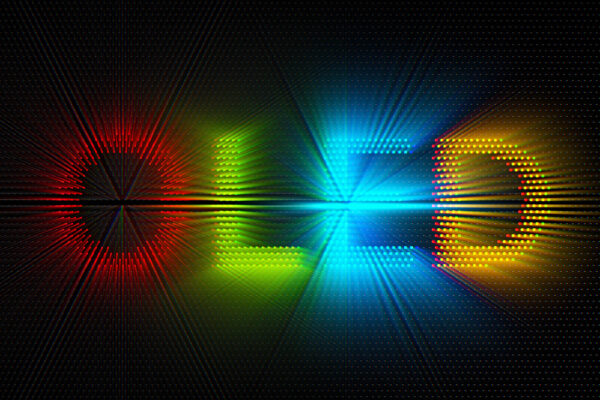Welcome to the comprehensive Buyer’s Guide for LED lighting. With its numerous advantages, including energy efficiency, long lifespan, and versatility, LED lighting has gained immense popularity in recent years. Whether you’re looking to upgrade your home’s lighting, enhance your office space, or embark on a new lighting project, this guide will equip you with the knowledge needed to make informed decisions when purchasing LED lighting.
LED lighting technology has revolutionized the lighting industry by offering a more sustainable and cost-effective alternative to traditional lighting options. LEDs use semiconductors to convert electricity into light, resulting in significant energy savings and reduced environmental impact. Moreover, LED lights emit less heat, reducing the risk of fire hazards and making them safer to use in various applications.
This guide aims to assist you in navigating the diverse LED lighting market by providing essential factors to consider when selecting LED products. From understanding your lighting needs to evaluating energy efficiency, color temperature, and fixture types, we will delve into each aspect to help you choose the most suitable LED lighting for your requirements.
We will explore the importance of dimming capabilities, lifespan, and warranties, emphasizing the value of investing in high-quality LED lighting that ensures long-term performance and durability. Additionally, we will touch upon the significance of certifications, both for safety and environmental considerations, as well as compatibility and installation requirements.
What is LED Lighting?
LED lighting, or Light Emitting Diode lighting, is a highly efficient and versatile lighting technology that has gained tremendous popularity in both commercial and residential settings. Unlike traditional incandescent or fluorescent lighting, which use filaments or gas to produce light, LED lighting operates by passing an electric current through a semiconductor material. This process causes the electrons within the semiconductor to emit photons, generating light.
Advantages of LED Lighting for Commercial and Residential Fixtures:
LED lighting offers a multitude of advantages over traditional lighting technologies, making it an excellent choice for both commercial and residential lighting fixtures. Here are some of the key benefits:
- Energy Efficiency: LED lighting is renowned for its exceptional energy efficiency. LEDs consume significantly less energy compared to traditional lighting options, resulting in substantial energy savings. This efficiency translates into reduced electricity bills and a smaller carbon footprint, making LED lighting an environmentally conscious choice.
- Long Lifespan: LED lights have an exceptionally long lifespan, outlasting traditional lighting options by a wide margin. While incandescent bulbs typically last around 1,000 hours and fluorescent tubes around 10,000 hours, LED lights can last upwards of 50,000 hours or more, depending on the product. This longevity eliminates the frequent need for replacements and reduces maintenance costs.
- Durability and Reliability: LED lighting fixtures are highly durable and resistant to shock, vibrations, and extreme temperatures. They do not contain fragile components like filaments or glass tubes, making them more resistant to damage. LED lights are an ideal choice for applications where robust lighting solutions are required, such as commercial spaces with high foot traffic or outdoor environments exposed to the elements.
- Excellent Light Quality: LED lighting offers exceptional light quality, providing clear and consistent illumination. LED lights are available in various color temperatures, ranging from warm white to cool white, allowing you to create the desired ambiance for different spaces. Additionally, LEDs have a high Color Rendering Index (CRI), indicating their ability to render colors accurately and enhance visual clarity.
- Instant On and Flicker-Free: Unlike some traditional lighting technologies that require time to warm up or reach their full brightness, LED lights provide instant illumination. They turn on immediately, making them ideal for spaces where instant lighting is crucial. LEDs are also flicker-free, eliminating the irritating and potentially harmful effects of flickering lights, ensuring a comfortable and visually pleasing environment.
- Design Flexibility: LED lighting offers a wide range of design options and form factors. LEDs can be found in various shapes, sizes, and configurations, including bulbs, tubes, panels, strips, and more. This versatility allows for creative and customized lighting designs, enabling you to achieve specific lighting effects or cater to unique architectural and interior design requirements.
- Dimming Capabilities: LED lights are highly compatible with dimming systems, providing the flexibility to adjust light intensity and create different moods or settings. With dimmable LED lighting, you have precise control over brightness levels, allowing you to create dynamic and adaptable lighting schemes for various activities or occasions.
- Reduced Heat Emission: LED lighting generates significantly less heat compared to traditional lighting technologies. This heat reduction not only contributes to energy efficiency but also minimizes the risk of fire hazards and reduces the strain on cooling systems in commercial spaces.
- Environmental Friendliness: LED lighting is an environmentally friendly choice. LED lights do not contain hazardous materials like mercury, commonly found in fluorescent lights, which can be harmful to both human health and the environment. Additionally, the energy efficiency of LEDs helps reduce greenhouse gas emissions and decrease reliance on fossil fuels.
LED lighting offers numerous advantages for both commercial and residential lighting fixtures. With its energy efficiency, long lifespan, durability, excellent light quality, and design flexibility, LED lighting is a reliable and cost-effective solution. Whether it’s illuminating office spaces, retail stores, hospitals, homes, or outdoor environments, LED lighting provides superior performance and benefits.
Advantages of LED Lighting
For commercial spaces, such as offices, retail stores, and warehouses, LED lighting offers significant advantages. The energy efficiency of LEDs helps businesses reduce their electricity consumption and lower operating costs. By transitioning to LED lighting, commercial establishments can achieve substantial energy savings, leading to significant financial benefits in the long run. Moreover, the extended lifespan of LED lights reduces maintenance and replacement costs, minimizing disruptions to daily operations.
LED lighting also enhances productivity and visual comfort in commercial environments. The high-quality light output and accurate color rendering of LEDs create a well-lit and visually appealing atmosphere, positively impacting employees, customers, and visitors. LED lights can be tailored to specific tasks and areas, providing focused illumination for enhanced work performance, product displays, or architectural features.
In residential settings, LED lighting offers homeowners numerous advantages. Energy-efficient LED bulbs can significantly reduce electricity bills and contribute to a more sustainable lifestyle. The long lifespan of LEDs ensures homeowners have fewer bulb replacements, saving time and money in the long term.
LED lighting provides homeowners with flexibility in design and ambiance creation. Whether it’s warm and cozy lighting for living spaces, bright and functional lighting for kitchens and bathrooms, or colorful accent lighting for decorative purposes, LED lighting offers a wide range of options. Additionally, the availability of dimmable LED lights allows homeowners to adjust the brightness according to their preferences and different activities, creating a comfortable and personalized environment.
LED lights are also suitable for outdoor applications in residential settings. Whether it’s illuminating pathways, gardens, or patios, LED lighting provides energy-efficient and reliable outdoor lighting solutions. The durability and resistance to weather conditions make LEDs a practical choice for outdoor environments, ensuring longevity and reducing maintenance efforts.
LED lighting offers significant advantages for both commercial and residential lighting fixtures. From energy efficiency and long lifespan to superior light quality, design flexibility, and reduced maintenance, LED lighting provides a cost-effective and environmentally friendly lighting solution. By embracing LED technology, businesses can reduce operational costs and enhance productivity, while homeowners can create personalized and energy-efficient lighting environments.
Buyer’s Guide for LED Lighting
LED lighting has become increasingly popular in recent years due to its energy efficiency, long lifespan, and versatility. Whether you’re looking to upgrade your home or office lighting, or embarking on a new lighting project, this buyer’s guide for LED lighting will help you make informed decisions when purchasing LED fixtures.
Understand your Lighting Needs
To choose the right LED lighting, it’s important to understand your specific lighting needs and consider the characteristics of the space you’re illuminating. Here are some key factors to consider:
- Purpose of the lighting: Determine the main purpose of the lighting in the given space. Are you aiming for overall ambient lighting to provide general illumination? Or do you need task lighting for specific activities, such as reading or cooking? Alternatively, you might want accent lighting to highlight certain objects or architectural features. By identifying the intended purpose, you can select LED products that cater to those specific lighting requirements.
- Room size and layout: Take into account the size and layout of the room. Larger rooms may require brighter or multiple LED fixtures to ensure adequate illumination. Consider the ceiling height as well, as taller ceilings may necessitate fixtures with increased light output or specialized beam angles to properly light the space. Assessing the room size and layout will help you determine the number and type of LED fixtures needed for optimal lighting coverage.
By carefully considering your lighting needs and evaluating the characteristics of the room, you can make informed decisions when selecting LED products that are well-suited for your specific requirements.
Energy Efficiency
When selecting LED lighting, prioritize energy efficiency to reduce electricity consumption and lower operating costs. Look for LED products that are ENERGY STAR certified. These certifications ensure that the lighting fixtures meet stringent energy efficiency standards set by the U.S. Environmental Protection Agency (EPA). ENERGY STAR certified LED lighting consumes less energy while still providing high-quality light output.
To further assess energy efficiency, pay attention to two important metrics: lumens and wattage. Lumens indicate the brightness level of the LED light, while wattage measures the power consumption. By comparing lumens and wattage across different products, you can ensure that you’re getting the desired brightness while minimizing energy usage. Look for LED lighting solutions that offer high lumens per watt (lm/W) efficiency ratings for optimal energy savings.
Color Temperature and CRI
Understanding color temperature is essential for creating the desired lighting atmosphere. Color temperature is measured in Kelvin (K) and determines the warmth or coolness of the light. Lower Kelvin values, typically ranging from 2700K to 3000K, represent warm white light, which creates a cozy and inviting ambiance. On the other hand, higher Kelvin values, typically ranging from 5000K to 6500K, indicate cool white light, which offers a brighter and more energizing feel. Choose the color temperature that aligns with your preferences and suits the intended atmosphere of the space.
Additionally, consider the Color Rendering Index (CRI) when selecting LED lighting. The CRI measures how accurately the light source reveals colors compared to natural light. Look for LED lighting with a CRI of 80 or above for accurate color representation. Higher CRI values ensure that colors appear vibrant and true, making them ideal for spaces where color accuracy is crucial, such as art studios, retail environments, or homes where color differentiation is important.
LED Fixture Types
LED bulbs are a popular retrofit option, allowing you to replace traditional incandescent or CFL bulbs in existing fixtures. LED bulbs come in various shapes and base types, making them versatile and easy to install.
Downlights are recessed fixtures that provide focused illumination. They are commonly used for task lighting or highlighting specific areas, such as kitchen countertops, workstations, or display cases. Downlights offer a sleek and unobtrusive lighting solution.
LED strip lights are flexible and versatile lighting options that come in long strips with adhesive backing. They are commonly used for accent lighting, cove lighting, or adding visual interest to a space. LED strip lights can be easily cut to size and installed in various configurations, allowing for creative lighting designs.
Panel lights are flat and thin LED fixtures that offer uniform illumination. They are suitable for offices, schools, and commercial spaces where consistent and glare-free lighting is desired. LED panel lights provide even light distribution and can be recessed or surface-mounted, offering a modern and minimalist lighting solution.
By understanding the different LED fixture types and their respective applications, you can choose the appropriate fixtures that align with your lighting goals and aesthetic preferences.
Dimming Capabilities
Ensure that the LED lights you choose offer dimming capabilities if you desire the flexibility to adjust light intensity. Not all LED lights are dimmable, so it’s essential to check the product specifications. Additionally, consider the compatibility of the LED lights with existing dimmer switches. Verify if your current dimmer switches are compatible with LED lighting or if you need to purchase dimmer switches specifically designed for LED lights.
Lifespan and Warranty
LED lights have a significantly longer lifespan compared to traditional lighting options. When selecting LED lighting, look for products with longer rated lifespans, which are usually listed in hours. Choosing LED lights with extended lifespans reduces the frequency of bulb replacements and ensures long-term cost savings.
Warranty is an important aspect to consider as well. Reputable LED lighting manufacturers often provide warranties for their products. Carefully read and understand the warranty terms to know what is covered and for how long. A longer warranty period indicates the manufacturer’s confidence in the quality and performance of their LED lighting products.
Price and Quality
While comparing prices is important, it’s crucial to prioritize quality and reliability over choosing the cheapest option available. Cheaper LED lighting products may compromise on performance, durability, and energy efficiency. Investing in higher-quality LED lighting ensures better overall performance, longer lifespan, and greater energy savings in the long run. Consider the reputation of the manufacturer, product reviews, and recommendations to assess the quality of the LED lighting you are considering.
Certifications
Ensure that the LED lighting products you purchase have undergone safety testing and carry appropriate certifications. Look for safety certifications from recognized organizations such as UL (Underwriters Laboratories) or ETL (Intertek). These certifications ensure that the LED lights meet established safety standards, providing peace of mind in terms of electrical safety.
In addition to safety certifications, consider LED lighting products with environmental certifications. Look for certifications such as RoHS (Restriction of Hazardous Substances) or Energy Star, which indicate compliance with environmentally friendly practices and a reduced environmental impact. Opting for LED lighting products with these certifications demonstrates a commitment to sustainability and eco-conscious choices.
Compatibility and Installation
Ensure compatibility when retrofitting existing fixtures with LED bulbs or retrofit kits. Check the base types (e.g., E26, GU10) and size dimensions of the LED lighting to ensure a proper fit with your current fixtures.
Evaluate the installation requirements of the LED lighting you are considering. Determine if professional assistance is needed or if it can be easily installed as a do-it-yourself project. Factors such as wiring, mounting options, and additional equipment required for installation should be taken into account.
Reviews and Recommendations
Before making a purchase, take the time to read customer reviews and testimonials of the specific LED lighting products you are considering. Customer reviews provide valuable insights into the performance, durability, and overall satisfaction with the product.
In addition to customer reviews, seek recommendations from lighting professionals, electricians, or individuals who have experience with LED lighting. Their firsthand expertise and insights can help guide your decision-making process and provide valuable recommendations.
Consider Additional Features
Explore LED lighting products with smart capabilities if you are interested in integrating your lighting with a smart home system. Smart LED lights can be controlled and adjusted through smartphone apps or voice assistants like Amazon Alexa or Google Assistant, offering convenience and flexibility.
For outdoor or security lighting, consider LED lights with built-in motion sensors. These lights automatically turn on and off based on detected movement, providing enhanced convenience and energy savings.
Maintenance Requirements
LED lighting generally requires minimal maintenance. However, consider factors such as cleaning requirements and the occasional need for bulb replacements. Opt for LED lighting options that are easy to clean and provide convenient access for bulb replacements, if needed, to ensure the longevity and performance of your lighting setup.
Get Equipped with LED Lights!
LED lighting has revolutionized the way we illuminate our spaces, offering numerous advantages over traditional lighting options. By considering the factors outlined in this buyer’s guide for LED lighting, you can confidently select LED lighting products that align with your specific needs and preferences.
The energy efficiency of LED lighting ensures reduced electricity consumption and lower operating costs, making it a cost-effective and environmentally friendly choice. With their long lifespan, LED lights minimize the frequency of replacements, saving you time and money in the long run. The superior light quality, color temperature options, and high Color Rendering Index (CRI) of LED lighting create visually appealing and accurately illuminated environments.
Choosing the right LED fixtures, such as bulbs, downlights, strip lights, or panel lights, allows you to customize your lighting design and achieve the desired lighting effects for various spaces. Additionally, considering dimming capabilities, compatibility, and installation requirements ensures a seamless integration of LED lighting into your existing setup.
Prioritizing quality, checking for certifications, and considering customer reviews and recommendations help ensure that you invest in reliable LED lighting products that deliver optimal performance and longevity. The inclusion of additional features like smart capabilities or motion sensors enhances convenience, energy efficiency, and automation possibilities.
LED lighting is a versatile and sustainable lighting solution for both commercial and residential applications. With its energy efficiency, long lifespan, excellent light quality, and design flexibility, LED lighting provides cost-effective and environmentally friendly options for transforming your spaces. By utilizing this buyer’s guide, you can make informed decisions and enjoy the benefits of efficient, durable, and visually appealing LED lighting for years to come.

